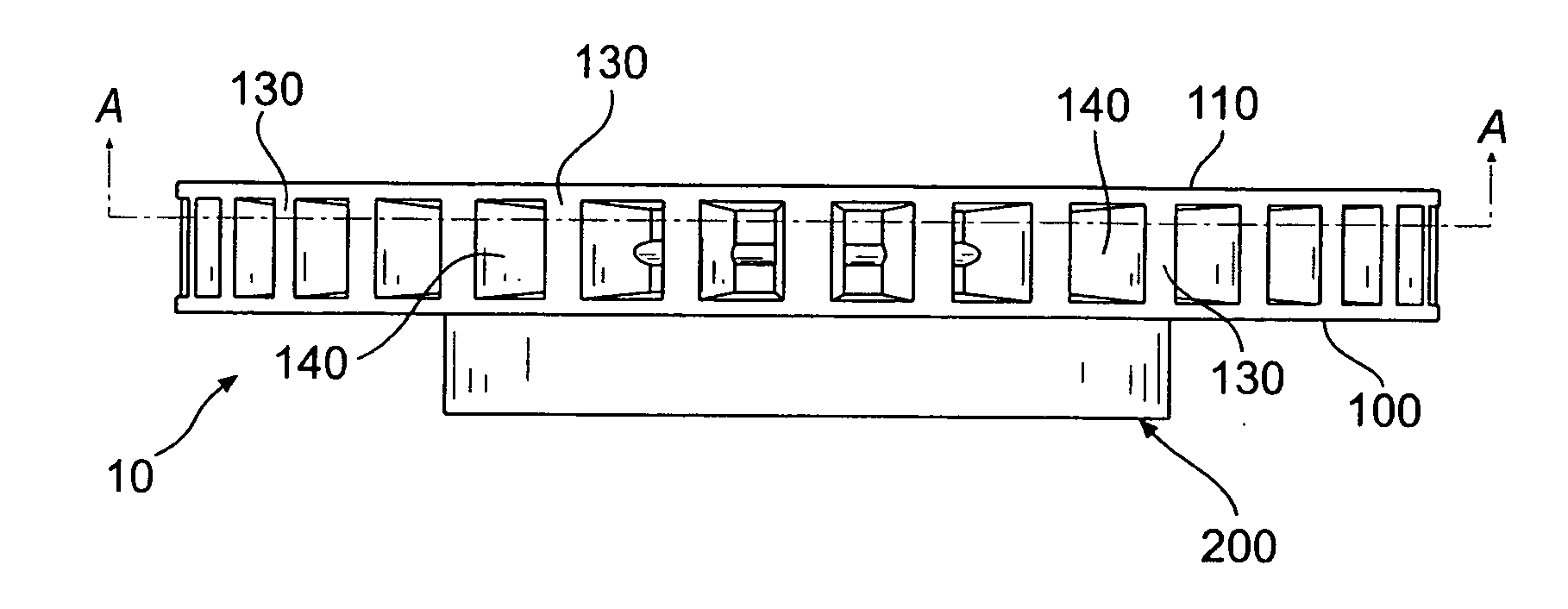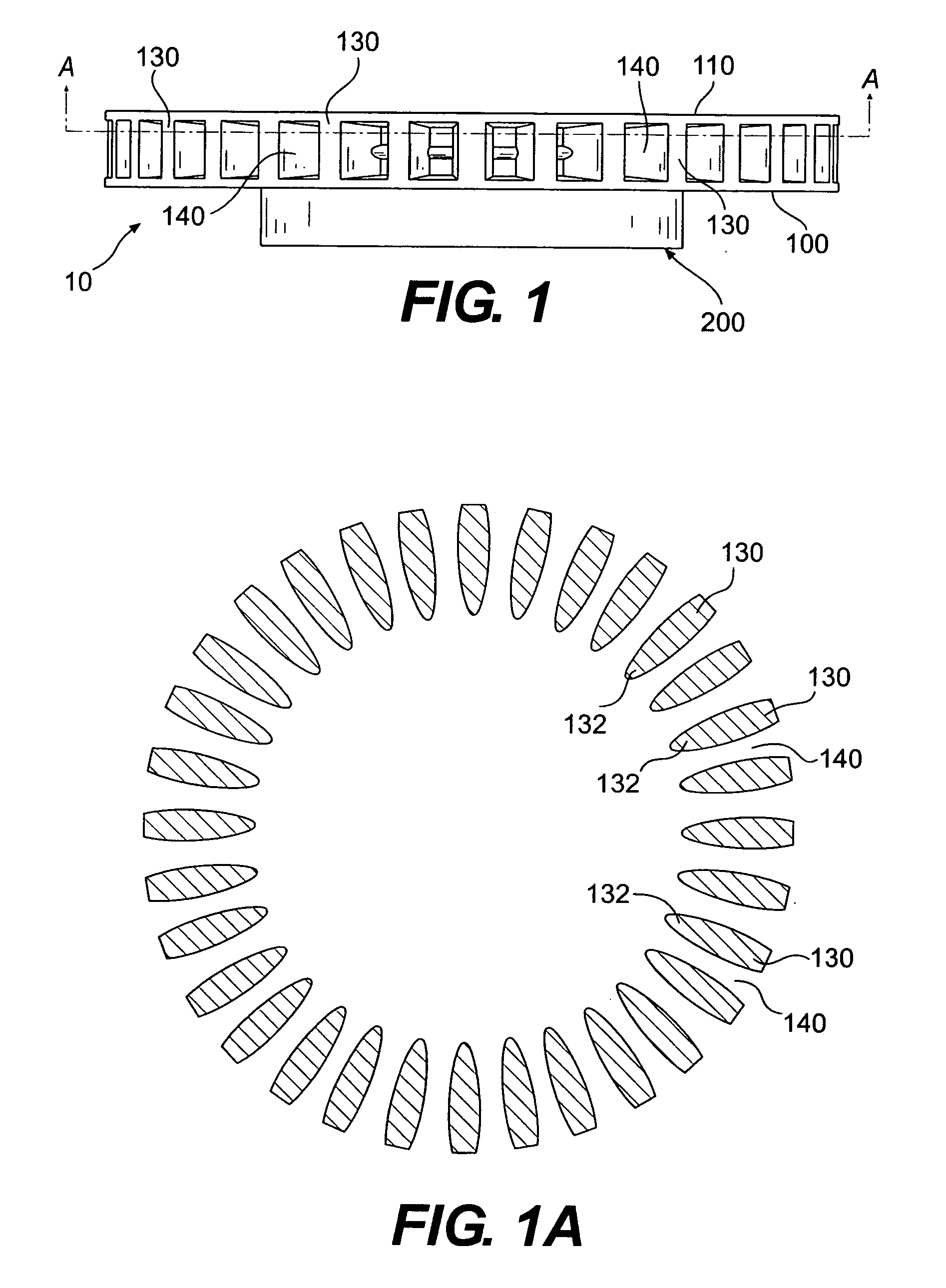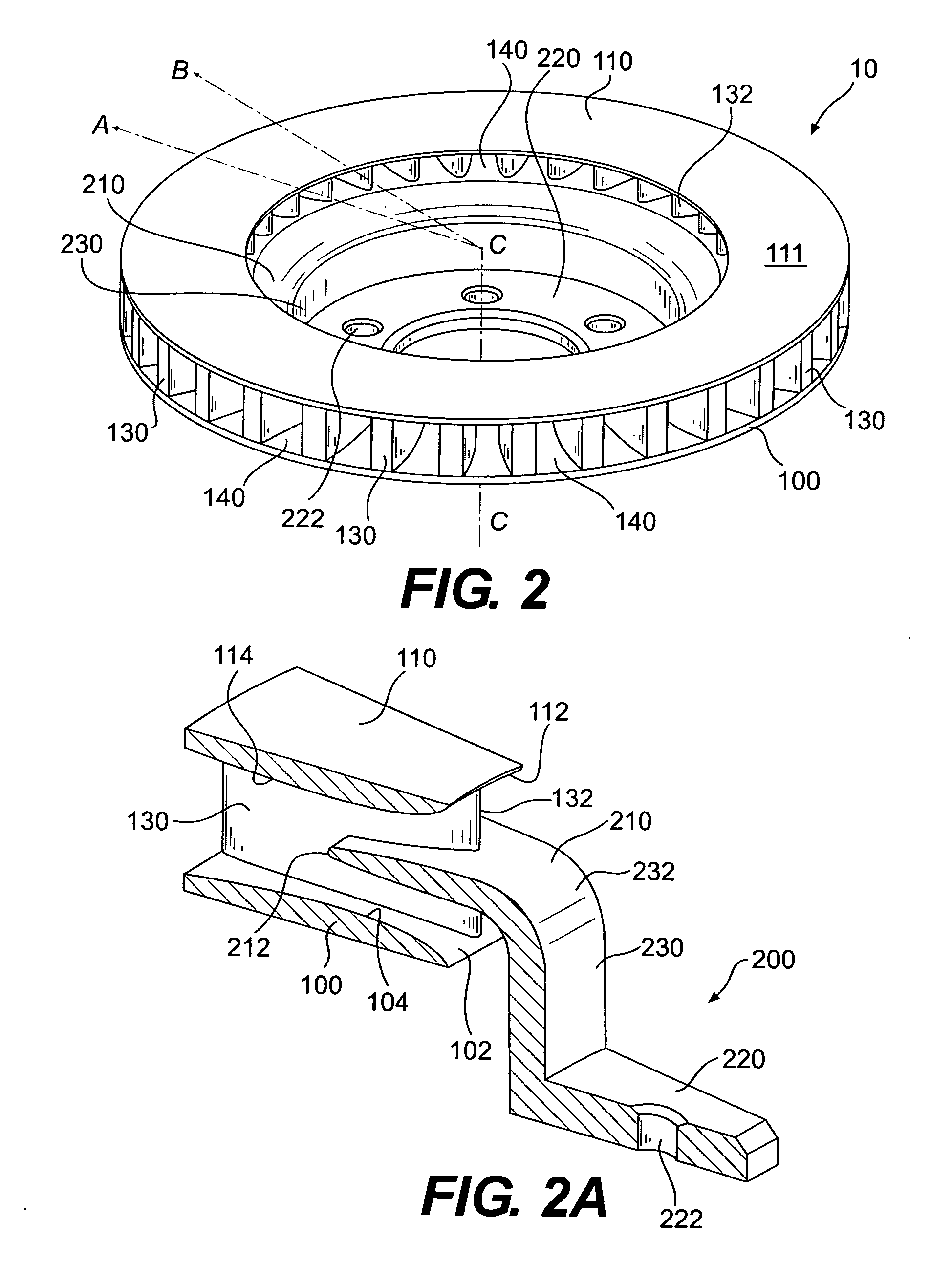Aerodynamic vented rotor
- Summary
- Abstract
- Description
- Claims
- Application Information
AI Technical Summary
Benefits of technology
Problems solved by technology
Method used
Image
Examples
Embodiment Construction
[0024] As shown in FIG. 1, an aerodynamic vented rotor 10 of the invention includes an outboard disc 100 and an inboard disc 110. The outboard disc 100 and the inboard disc 110 are preferably parallel annular discs that are spaced from one another. Outboard disc 100 is what a user might see from a location external to (outside of) the vehicle when looking into the vehicle's wheel. The outboard disc 100 includes a friction surface 101 (see FIG. 3B) and the inboard disc 110 includes a friction surface 111 (see FIGS. 2 and 3C). The friction surfaces 101, 111 are preferably maintained adjacent to brake pads of a brake caliper (not shown). During braking, brake pads commonly sweep along the friction surfaces 101, 111 to slow or stop the vehicle through controlled slippage. Thus, friction surfaces 101, 111 are heat dissipating surfaces during vehicle braking.
[0025] The outboard disc 100 and the inboard disc 110 are spaced from one another by vanes or fins 130. Vents 140 extend between th...
PUM
 Login to View More
Login to View More Abstract
Description
Claims
Application Information
 Login to View More
Login to View More - R&D
- Intellectual Property
- Life Sciences
- Materials
- Tech Scout
- Unparalleled Data Quality
- Higher Quality Content
- 60% Fewer Hallucinations
Browse by: Latest US Patents, China's latest patents, Technical Efficacy Thesaurus, Application Domain, Technology Topic, Popular Technical Reports.
© 2025 PatSnap. All rights reserved.Legal|Privacy policy|Modern Slavery Act Transparency Statement|Sitemap|About US| Contact US: help@patsnap.com



